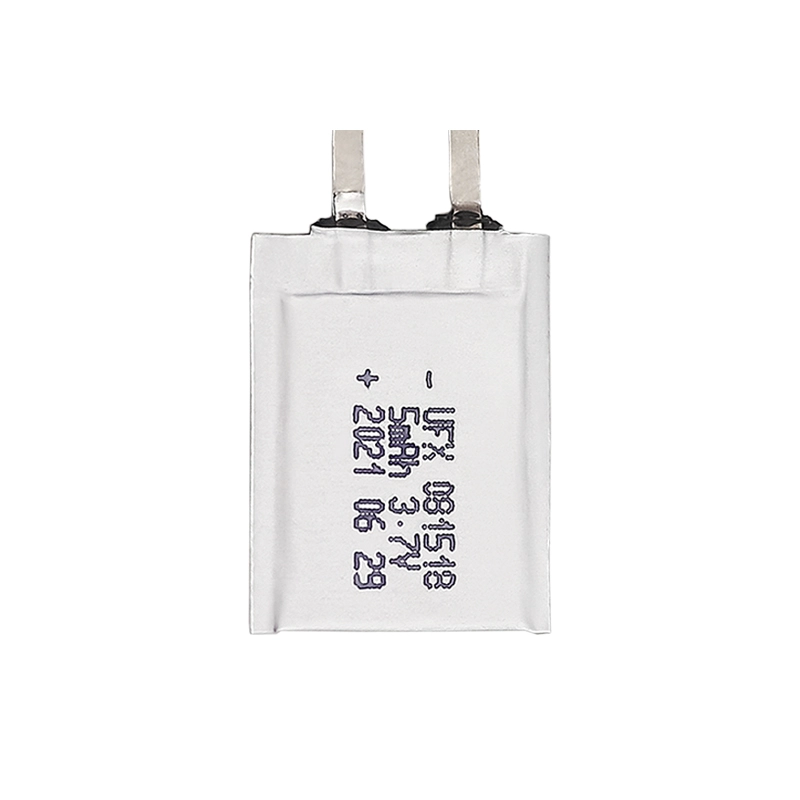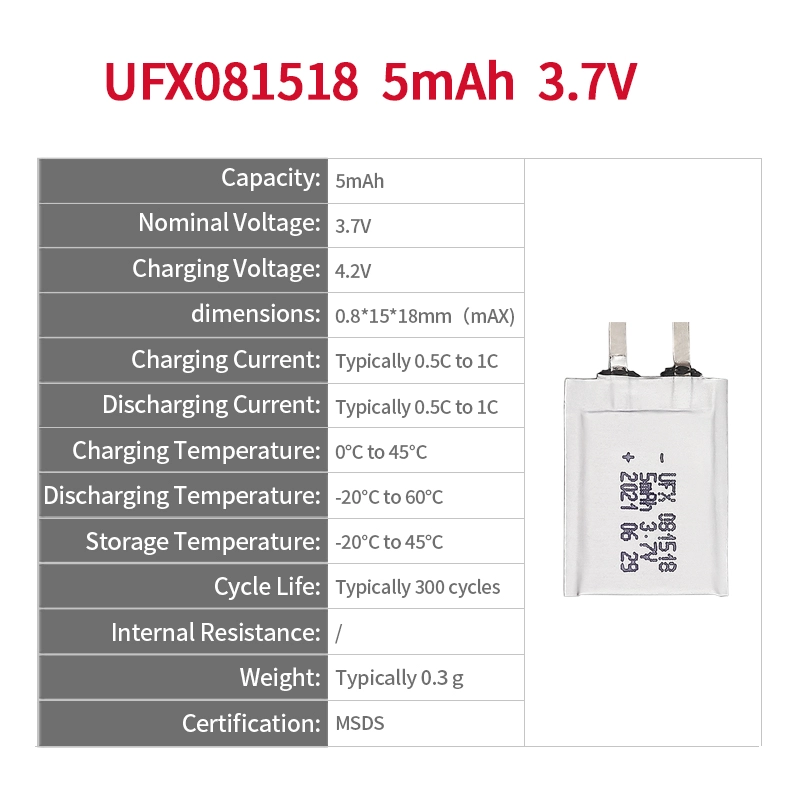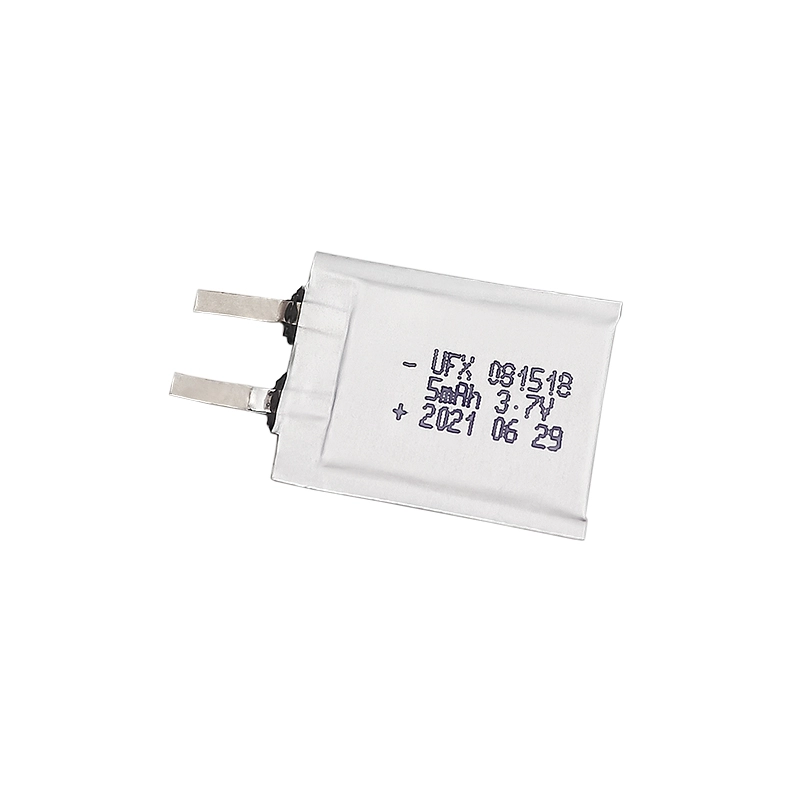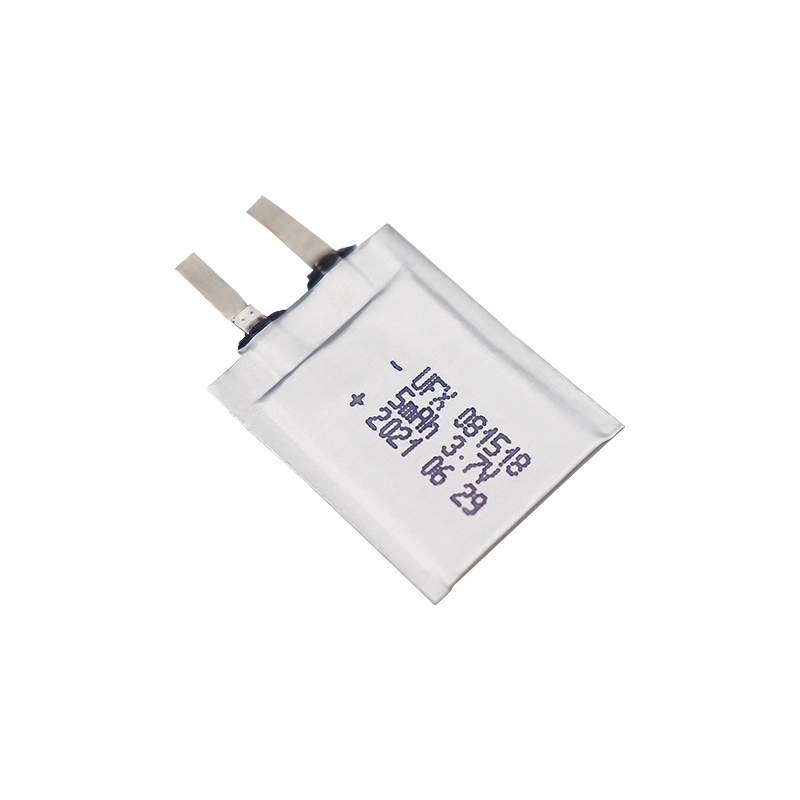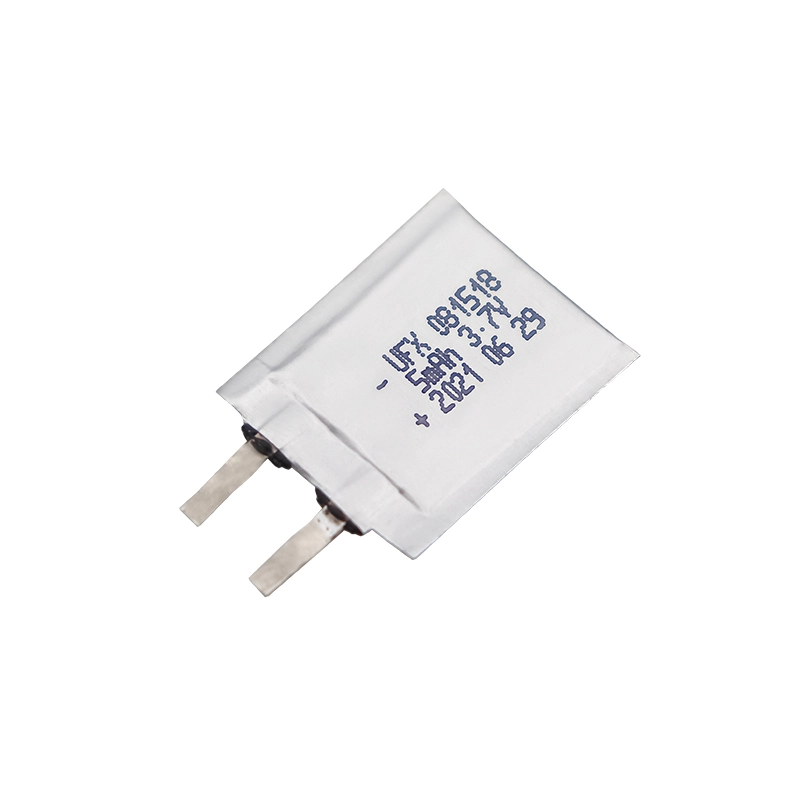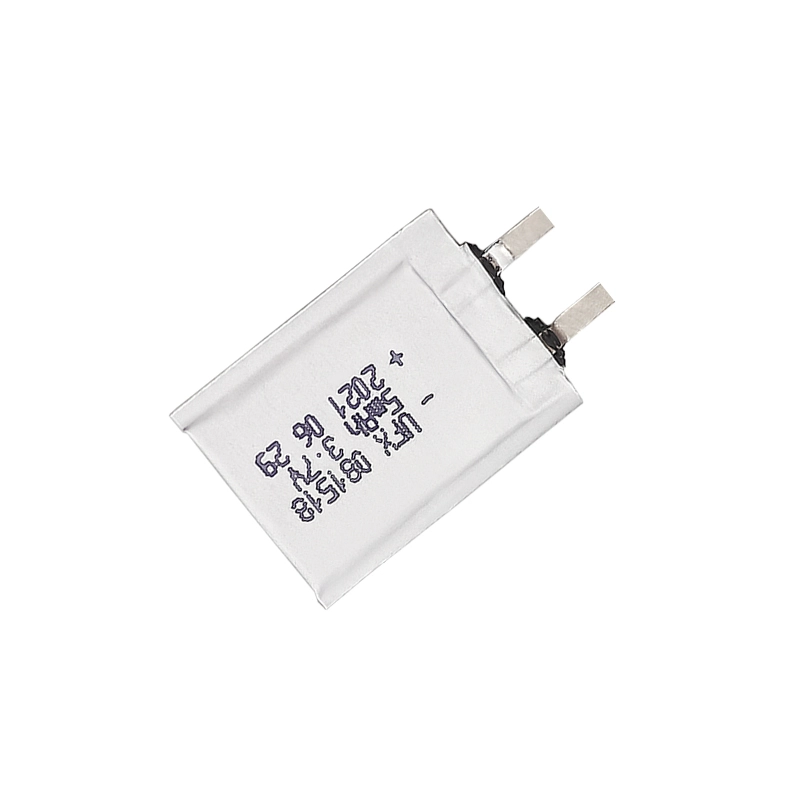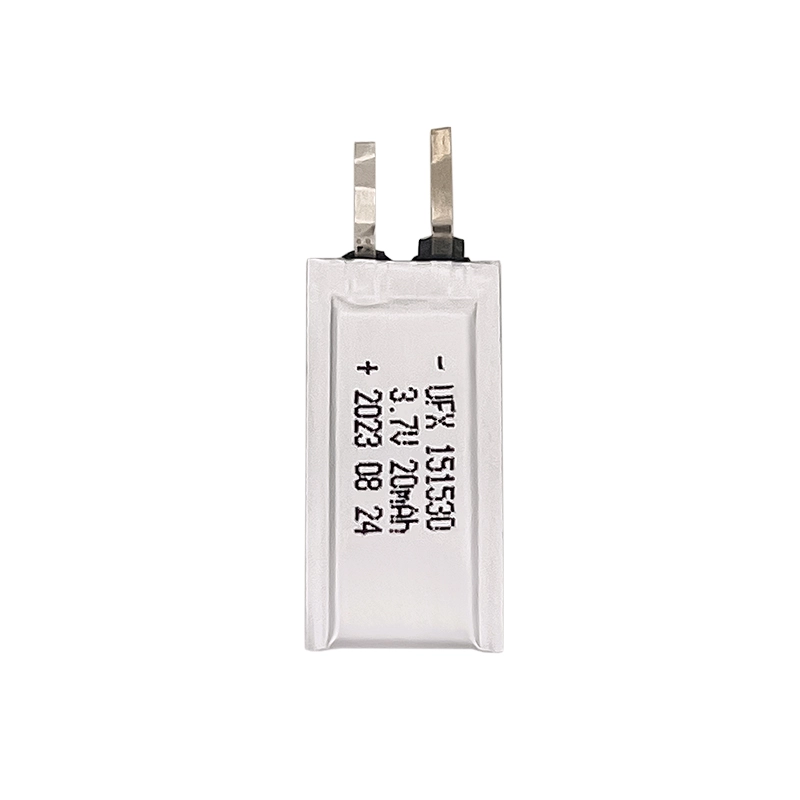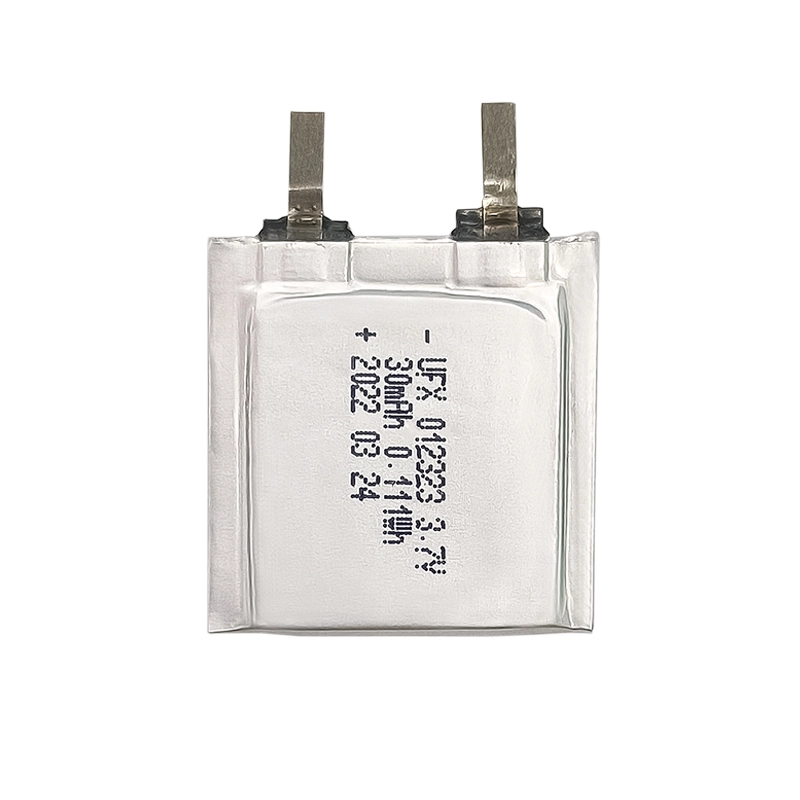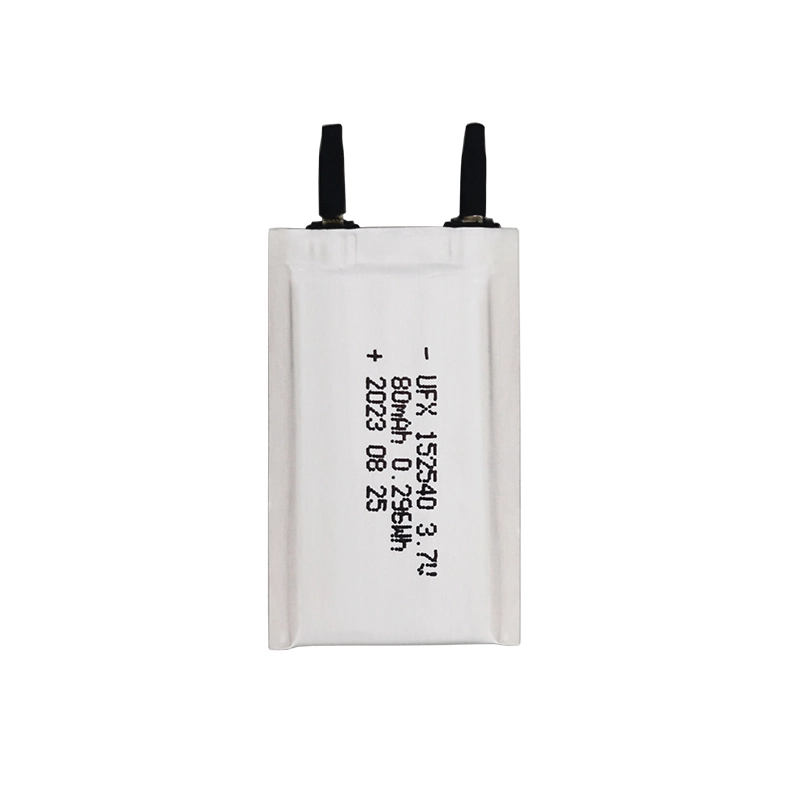-
Product Details
-
Specs
-
Capacity Fast Calculator
-
Application
-
Content
-
FAQs
-
Reviews

Product Details
Discharge Rate
Long Cycle Life
Ultra-Low Self-Discharge
Wide Temperature Range



Self-discharge is higher at 100% state of charge (SOC) compared to 70% SOC.

Ufine's custom low-temperature batteries can be used for -40°C to 55°C operation, catering to diverse outdoor scenarios.
Thorough Capacity Testing
Each Ultra-Thin Battery undergoes meticulous capacity testing before shipment, validating normal parameters encompassing voltage, current, charging, and discharging data for consistent performance.


Environmental Consciousness
Utilizes premium A-grade battery cells, ensuring leak-proof and environmentally friendly operations, aligning with sustainable practices.
Battery Specification
-
1. Mechanical Characteristics
Cell 081518
PCM No NTC No Weight appr. 0.3g Configuration 1S1P -
2. Electrical Specification
Capacity 5mAh Nominal Voltage 3.7V Energy 0.0185Wh Internal Resistance less than 300mΩ Max. Charge Voltage 4.2V Discharge Cut Off 2.75V Max. Charge Current 5mA Max. Discharge Current 5mA Standard Charge Current 2.5mA Standard Discharge Current 2.5mA Charging Temperature 0℃ to 45℃ Discharging Temperature -20℃ to 60℃ Storage Temp.Range 1 year at -20℃ to +30℃ 3 mos. at -20℃ to +45℃ 1 mo. at -20℃ to +60℃ Cycle life 100 cycles ≥92% 300 cycles ≥88% 500 cycles ≥80% -
3. Cell protection
Overcharge Detection No Overdischarge Detection No Overcurrent Detection No Short protection No
Lipo Battery Cell Capacity Fast Calculator
Please enter your battery information to calculate the battery capacity and energy.
The capacity calculated by this tool is only an approximate value. If you need an accurate assessment, please contact our professional engineers.
3.7 V 5mAh Ultra Thin Lithium Battery Application
Ultra Thin Battery For Tracker
Designed specifically for tracking devices, our ultra-thin batteries are crafted to maintain a sleek and compact profile. Engineered with precision, these batteries offer exceptional thinness without compromising on performance. With a focus on energy efficiency, they ensure a reliable power source for your tracker, guaranteeing uninterrupted functionality and peace of mind.
The Complete Guide For 5mAh 3.7 V Ultra Thin Battery
A 3.7 V 5mAh ultra-thin battery serves as a crucial power source for various electronic devices. This guide delves into its components, functionalities, and best practices for optimal use.
Part 1. Advantages and Applications
The 5mAh 3.7 V ultra-thin battery is lauded for its diminutive size, fitting seamlessly into devices with space limitations such as smart cards, miniature sensors, and wearable tech. Its ultra-thin form enables diverse applications, offering power solutions for compact electronics where size matters most.
Part 2. Technical Specifications
Our ultra-thin battery boasts a 5mAh capacity and a 3.7 V output, offering compact yet efficient power. Its diminutive size ensures compatibility with space-constrained gadgets while maintaining stable discharge rates.
Part 3. Safety and Handling
Safety considerations are pivotal for this small-sized battery. Adhering to recommended storage temperatures and handling with care prevents overheating risks, ensuring the safe utilization of compact devices without compromising safety.
Part 4. Maintenance and Longevity
Optimizing the battery's lifespan requires adhering to suggested charging cycles and avoiding extreme temperature fluctuations. Proper maintenance, including periodic checks for physical damage, sustains the battery's longevity in ultra-thin devices.
Part 5. Buying Guide and Recommendations
For reliable and customized solutions, consider sourcing your 5mAh 3.7 V ultra-thin li-ion batteries from ufine custom battery. Our commitment to quality assurance and tailored battery solutions ensures dependable performance for your specific needs.
FAQs
-
What are the key advantages of ultra thin batteries in applicationultra thin batteriess with space constraints?
Ultra thin batteries offer a slim profile, making them ideal for applications with limited space while maintaining reliable performance. -
How does the energy density of ultra thin batteries compare to standard battery designs?
Despite their slim profile, ultra thin batteries maintain competitive energy density, ensuring efficient power delivery. -
Are there any considerations for the mechanical durability of ultra thin batteries in flexible or bendable applications?
Ultra thin batteries are designed with mechanical durability in mind, making them suitable for flexible and bendable applications without compromising performance. -
How long does it take to fully charge a lithium battery?
Charging time depends on the battery's capacity and the charger's current. For example, if the battery capacity is 4000mAh and the charger current is 2500mA, charging time = 4000mAh / 2500mA = 1.6 hours. -
How long do lithium batteries last?
Our lithium battery cycle life is more than 500 times. The lifespan of a lithium battery depends on various factors, such as usage patterns, charging and discharging conditions, and overall maintenance. -
Can lithium batteries be customized for specific applications?
Yes, lithium batteries can be customized to meet specific requirements. This includes customizing the battery capacity, voltage, size, shape, and other parameters to suit the application's needs. Capacity: 20mAh~12000mAh, Voltage: 3.2 V~48 V.
Reviews
High Energy Density
It stores large amounts of energy in a smaller and lighter package
Longer Cycle Life
Withstands extensive charge and discharge cycles
Low Self-Discharge
Maintains power longer when not in use
Safety
Minimizes the risk of accidents and ensures safe operation
Related Articles
About Lithium Battery Industry News

Paper Battery vs. Flexible Battery: What's the Difference and Which Is Better?
Paper vs. flexible batteries: learn the key differences, benefits, and which power source fits best for wearables, sensors, and smart tech.
2025-4-11 Ufine
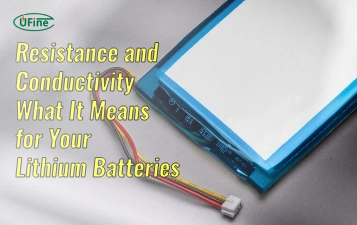
What to Know Before Buying a Tiny LiPo Battery for Your Project
Tiny LiPo batteries are powerful and compact. Learn how to choose the right one for your project with specs, safety, and charging tips.
2025-4-11 Ufine
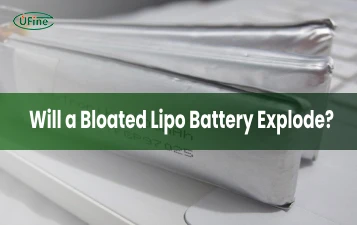
Bloated LiPo Battery: Will It Explode?
Will a bloated LiPo battery explode? Discover the causes, risks, safety steps, and expert tips to avoid disaster and protect your gear. Must-read safety guide!
2025-4-10 Ufine
